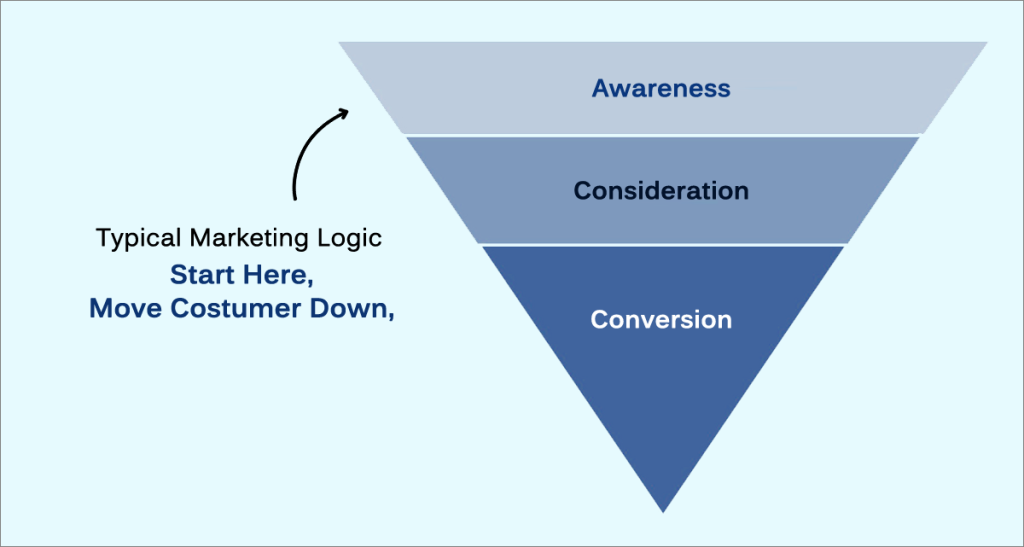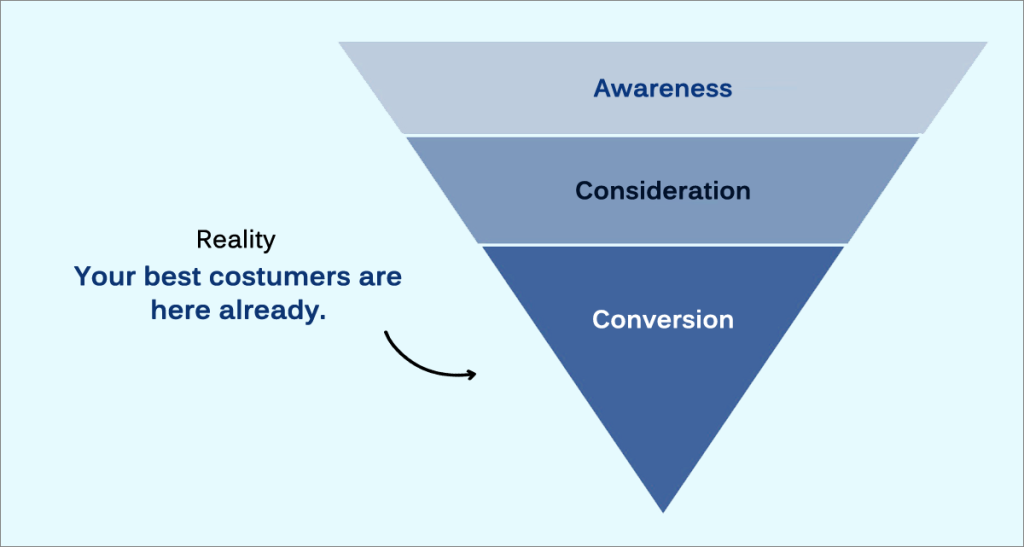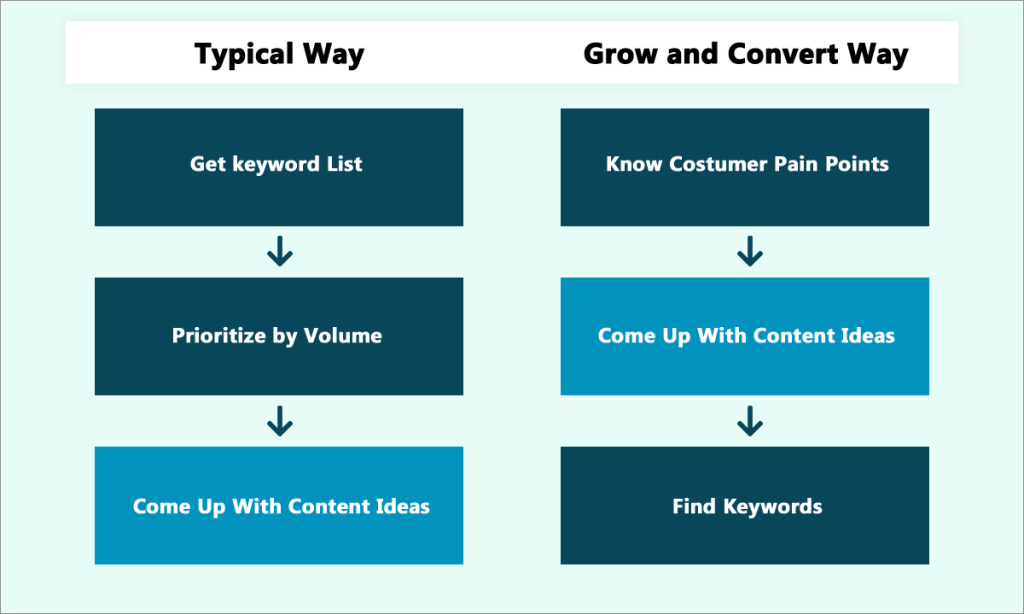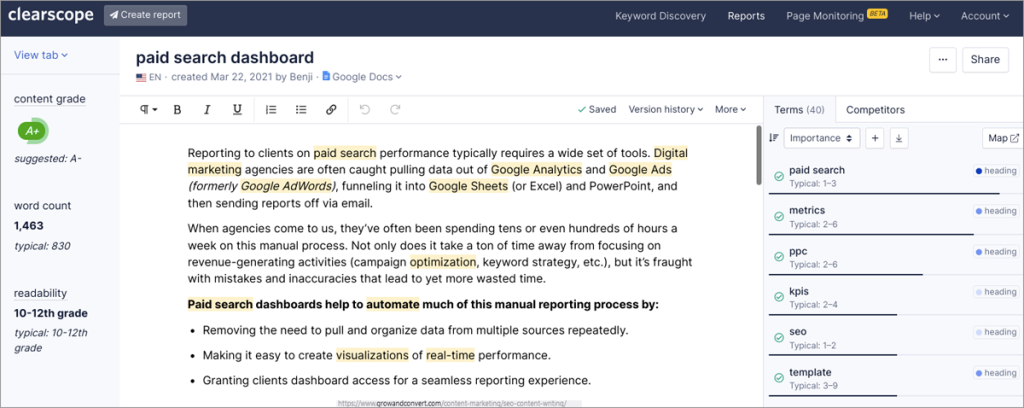Many businesses and marketers often inquire about finding skilled writers or enhancing their content for search engines. While not everyone can become our client, many are eager to improve their writing skills independently.
In the past, we’ve discussed hiring writers but haven’t delved into our approach to writing SEO content. This post aims to address that gap. When reviewing existing resources on SEO content writing, we noticed a focus on basic tips, like keyword integration, but a lack of comprehensive guides on creating SEO-rich content that ranks well for key search terms.
A common oversight in SEO writing advice is the primary objective of SEO content: to persuade and convert. Effective SEO content should not only rank highly but also convert visitors into customers.
This post explores how to craft content that excels in search engine visibility and persuasively promotes your products or services. We’ll define SEO content writing and provide a detailed 5-step process for creating it effectively.
What is Content Writing?
SEO content writing involves incorporating specific keywords into web pages or blog posts to enhance their search engine rankings. Through our extensive experience as full time content writer service provider to various brands, we’ve identified two major issues with focusing solely on keyword usage:
- Achieving high search rankings for key terms involves more than just keyword placement. The structure, argumentation, and detailed information are equally crucial.
- Focusing only on keywords overlooks the ultimate goal of SEO content: to market and sell your product. Keywords alone don’t drive purchases.
In essence, SEO content writing entails selecting topics, structuring articles, and crafting content that both boosts search rankings and attracts customers. Below, we outline a 5-step process we’ve successfully implemented with numerous clients.
Topic: Brainstorm ideas and identify key terms that align with your business goals.
SERP Analysis: Analyze search results for each keyword to determine necessary content elements for ranking.
Structure: Organize your article based on insights from search engine results pages.
Writing: Create compelling content that highlights the benefits of your product or service.
On-Page SEO: Enhance your content through on-page SEO techniques.
Throughout this process, common pitfalls can occur. As we examine each step, we’ll highlight these potential mistakes and their implications, helping you avoid them in your strategy.
Components of SEO Content Writing
- Keyword Research: The foundation of successful SEO content lies in meticulous keyword research. Identifying the right keywords that resonate with your audience is crucial. Strategically incorporating these keywords into titles, subtitles, and the body of the content is essential for seamless integration.
- Structure and Format: Organizing content for readability is paramount. Well-structured writing with clear headings and concise paragraphs enhances user understanding and aids search engines in comprehending the content’s focus. A user-friendly layout, including bullet points and images, further improves engagement and accessibility.
- Meta Tags: Crafting engaging meta tags, including title tags and meta descriptions, is vital for SEO writing. These concise previews offer a glimpse of the content, influencing user decisions to engage. Including target keywords in meta tags also guides search engines in content categorization.
- Internal and External Linking: Effective use of internal links enhances navigation across your website, while external links to reputable sources bolster content credibility. Both forms of linking contribute to a cohesive digital ecosystem.
- Long-Form Content: In-depth articles often rank well in search engine results, though optimal content length varies by topic. Comprehensive articles provide opportunities to cover a subject extensively, incorporate numerous relevant keywords, and establish subject matter expertise.
Importance of SEO Content Writing
SEO content writing is a pivotal element in the digital landscape. It’s about striking a balance between appealing to both users and search engines. SEO content drives organic website traffic through the strategic use of commonly searched keywords, enhancing brand visibility, attracting potential customers, and establishing authority in a specific field.
Moreover, SEO content enables search engines to effectively interpret and index web pages. Proper keyword usage and organized web page structure facilitate easier discovery by search engines, leading to higher rankings in search results.
SEO content writing extends beyond technical aspects, focusing on engaging and satisfying readers. It addresses their queries, offers relevant information, and encourages longer site visits. Search engines use these factors to gauge content quality and relevance.
In essence, SEO content writing bridges quality content with a vast online audience. It transforms well-crafted information into a digital resource that resonates with the intended audience while aligning with search engine algorithms, fostering a synergistic relationship between content creators, users, and search engines in the digital realm.
Also Read: Why Most Websites Failed the September 2023 Google Helpful Content Update (And How You Can Succeed!)
5-Step SEO Content Writing Process
Think of Content Ideas and Target Keywords That Have Business Value

Our strategy emphasizes that many businesses and content marketers overly focus on creating content around popular search terms. These general searches often lead to less purchasing intent, resulting in fewer sales and new customers for websites.

Marketing should raise product awareness, stimulate interest, and ultimately drive purchases. To this end, companies should prioritize specific “long-tail keywords” that, despite less frequent searches, are more likely to convert into sales.
Long-tail keywords often have a higher purchase conversion rate, potentially leading to increased sales. The common approach of focusing on keyword frequency can be misleading. Instead of starting with questions like:
- What keywords do we want to rank highly for?
- What are the most searched keywords?
- What type of content should we create for these keywords?

Businesses should consider:
- What challenges do our customers face?
- Which of these issues can we address in engaging content, while showcasing how our products or services provide solutions?
- What are the relevant keywords for these topics?
Our method centers on understanding customer problems, generating content ideas, and identifying corresponding keywords. This approach has proven effective in various sectors, including B2B, B2C, SaaS, online retail, and service-based industries. Once you’ve pinpointed the keywords to focus on, you can apply steps 2 through 5 to develop targeted content for each.
Also Read: 13 Best SEO Keyword Research Tools and Their Benefits in 2023
Perform SERP Analysis
As previously mentioned, many businesses mistakenly believe that SEO simply involves making basic changes to their articles, such as incorporating the main keyword into the title and subheadings or employing a tool to identify relevant keywords. This approach is often insufficient.
While this might yield some results for obscure, non-commercial terms, it’s unlikely to secure a first-page ranking for competitive business keywords that are targeted by other companies.
What more is required? In our experience, a critical step in creating SEO content is to analyze search engine results pages (SERPs) to understand user intent. Consider the following:
- What types of content are currently ranking? Are they primarily detailed “how-to” guides, listicles, or landing pages?
- What topics are covered in these articles?
Using this information, you can determine the type of article to write, its content, and how to differentiate it from other top-ranking articles. The goal is to create something better and more useful than what is currently on the first page.
This understanding is crucial because if you align with what searchers are looking for, they’re likely to spend more time on your post and engage with it. This signals to Google that your content is relevant, improving its ranking. Additionally, users are more likely to favor your brand and consider your product.
Our approach to analyzing SERPs, which has yielded positive results for our clients, includes these steps:
Analyze the titles, page types, and sources of the top search results: The titles and types of pages indicate the kind of content that ranks for your keyword. Observe whether lists, “how-to” guides, landing pages, or other formats dominate. This helps you understand what Google deems appropriate for the keyword, guiding your content format choice.
However, this isn’t a rigid rule. If you believe a different content type would better meet user needs, consider experimenting. Understanding the sources of top results helps identify your competition.
- Examine the topics discussed in these articles or pages, noting recurrent themes: Review the first-page results, focusing on topics repeated in multiple articles, especially in subheadings. These recurring themes should be included in your article to ensure relevance in SERPs.
- Identify strengths and weaknesses of the top-performing pages or posts: Assessing the strong and weak points of currently successful pages provides insights into effective elements and opportunities for differentiation, guiding your content creation process.
- Determine the user intent behind the search term: After analyzing the results, identify the primary reasons people search for this keyword, shaping your content to meet these needs.
Choose the Type, Structure, and Angle of Your Post Based on SERP Analysis
Once you’ve analyzed the search results, it’s time to determine the specifics of your content.
- What will your post be? A blog, social media update, magazine article, or instructional content like guides or lists?
- How can your content stand out and be more helpful to your target audience?
- How will you organize your content to cover key topics for ranking and effectively promote your product or service?
Selecting the Type of Post
Typically, it’s advisable to choose a content type that ranks well in search results, as Google’s preference indicates user interest. For instance, we opted for a “how-to” blog post, aligning with search trends and facilitating product promotion within the content.
Choosing of Angle
Many top-ranking contents lack clarity in highlighting product uniqueness. As searchers often want to know which product is best for them, our focus was on distinctively presenting our product’s unique features. This approach aims to provide clarity to the reader, making our content more useful than competitors’. Avoiding redundant explanations like “What does the product do?” assumes the audience’s prior knowledge.
Structuring the Content
Based on our SERP analysis, the content needed to include:
- Product examples
- Templates
- Report features
- Key performance indicators for users
We structure our content as follows:
- [H2] How to Setup the Tool
- [H3] Link Your Data Sources
- [H3] Picking and personalizing a template
- [H4] Make a New Widget
- [H3] Making recurring reports (and giving clients special access for their needs)
- [H4] Setting up special access permissions for your customers
- [H2] Top Tools for Growing Agencies
We organize the content to include all the important subtopics for ranking. And, like we said earlier, the type of post we chose made it easy to showcase and sell the product.
“H2”, “H3”, and “H4” are the names for “Heading 2”, “Heading 3”, and “Heading 4”. They are used for titles in systems like WordPress. Headings have 2 important jobs:
- They organize content clearly, enhancing readability and user engagement. This not only improves user experience but also aids in higher Google rankings.
- Strategically placing keywords in headings and subheadings boost SEO performance.
Writing begins after this preparatory phase. The next step is crafting compelling content that persuades readers to purchase your product or service. This is an area where many SEO writers need improvement.
Create New, and Advanced Content That Includes Your Product or Service
Successfully ranking your content following steps 2 and 3 is essential, but it’s just as crucial to:
- Produce high-quality content.
- Effectively incorporate and promote your service or product.
Many businesses struggle with these aspects. A common issue is the prevalence of generic advice in blog articles, which fails to impress potential customers. This often stems from hiring writers who lack deep knowledge about the topics they cover.
Rather than consulting company experts, these writers typically gather surface-level information from the internet. They base their articles on what competitors are discussing, leading to uninspired content that doesn’t resonate with potential customers. This has several consequences:
- The content doesn’t engage or appeal to potential customers, deterring them from making purchases.
- Writers must develop a better understanding of the company and its customers to build convincing arguments and effectively promote the company’s products or services.
- Businesses invest significantly in content marketing without seeing a meaningful return.
So, how do you create content that is unique, original, and engaging? The key lies in having content strategists and writers who are well-versed in your field. They should have a deep understanding of your customer’s challenges and how your products or services offer superior solutions. This expertise enables them to write compelling SEO content that persuades readers to consider becoming customers.
We’ve observed that early-stage product promotion in content can drive substantial sales. While the conversion rate for top-of-funnel guides may be lower compared to bottom-of-funnel content, the higher search volume for top-of-funnel guides can still result in a significant number of conversions.
Also Read: Get Ahead in the Game: The Top 22 Free Keyword Research Tools for 2023
Improve Your Article With On-Page SEO and Create a Meta Description
After completing the initial draft, we use an SEO tool, Clearscope, to ensure proper keyword usage for optimal search engine optimization. Typically, our content initially scores a ‘B’ grade. Our goal is to incorporate additional relevant keywords to achieve an ‘A+’ grade. This requires finesse, as integrating keywords that don’t naturally fit can be challenging.

Some marketers fall into the trap of artificially stuffing keywords into their content. However, this degrades content quality and can be off-putting to readers. Furthermore, such tactics are no longer effective for online visibility, as Google’s algorithm can now detect and penalize this approach.
In cases where keywords do not seamlessly integrate, or if their inclusion compromises content quality, we opt not to use them. After finalizing our draft, we craft a meta description that appears below our post’s link in search engine results. While the impact of meta descriptions on search rankings is debatable, they certainly provide an opportunity to engage readers and encourage clicks.
Tips for Writing SEO-Friendly Content
- Audience-Oriented: Understanding your audience is crucial for crafting effective SEO content. Tailoring your content to align with audience preferences and search behaviors ensures relevance and value.
- Focus on Quality Over Quantity: Emphasizing high-quality content is more beneficial than producing a large volume of mediocre content. Search engines increasingly value content quality, relevance, and user satisfaction. Fewer, well-crafted pieces are preferable to numerous subpar ones.
- Content Updation: Keeping content current and relevant is important. Search engines favor regularly updated content. Revising and updating older articles can enhance their discoverability and maintain their relevance.
- Social Media Integration: Leveraging social media can increase content visibility and potentially improve search engine rankings. Sharing content on social media platforms not only reaches a wider audience but also contributes to its search performance.
- User Engagement Metrics: Tracking user interactions, such as time spent on a page, click-through rates, and bounce rates, provides insights into content performance. Producing content that engages users indicates to search engines its relevance and value.
Challenges in SEO Content Writing
SEO content writing presents various challenges, necessitating smart solutions to navigate them effectively. A common issue is keyword overuse. Excessive optimization can lead to awkward, keyword-stuffed content that is difficult to read.
Ensuring natural keyword integration and maintaining a smooth content flow is essential. Another challenge is neglecting user intent. Content should not solely focus on keywords but also aim to answer user queries and meet their needs. Understanding the technical aspects of SEO ensures that high-quality content aligns well with search engine algorithms.
Web developers often concentrate on writing and design, sometimes overlooking critical factors like website coding and how it communicates with search engines. Originality is crucial; duplicating or closely imitating others’ work can negatively impact search visibility.
Local businesses frequently overlook local SEO. Incorporating location-specific keywords and creating content tailored to the local audience can significantly enhance visibility in local searches.
To overcome these challenges, a blend of creativity, technical proficiency, and deep user understanding is required. This approach leads to SEO content that ranks well and resonates with the intended audience.
Wrapping Up
In the ever-evolving digital landscape, mastering SEO content writing is an ongoing journey. Adapting to search engine updates, staying informed about industry trends, and responding to shifts in user behavior are keys to creating content that ranks well and fulfills user needs.
The cornerstone of this process is producing high-quality, valuable content. This not only satisfies user queries but also aligns with search engine preferences. Regular content updates ensure relevance in line with the dynamic nature of search algorithms. The process concludes with meticulous tracking of engagement metrics, allowing for continuous improvement based on user interaction.
Ultimately, SEO content writing isn’t just about content creation; it’s about crafting a narrative that resonates with both users and search algorithms, maintaining online visibility and relevance. By focusing on user-centric, high-quality content, SEO can elevate your online presence, drive traffic to your website, and enhance your digital success.
FAQs
Why is keyword research important for SEO writing, and what tools can help find the right keywords?
Keyword research is crucial for SEO content writing as it ensures alignment with what users are searching for. Tools like Google Keyword Planner, SEMrush, and Ahrefs are invaluable in identifying relevant keywords, allowing writers to tailor their content to specific search queries effectively.
How does the user’s intention affect writing content for SEO, and how can we consider it while writing?
Grasping user intent is vital for SEO. The content should directly address what people are searching for. Writers need to ensure their content provides useful information or answers in line with user queries, thereby increasing user satisfaction with the search results.
How do pictures and videos help with SEO content, and how can we make them work even better?
Visual elements like images and videos significantly enhance website appeal. Optimizing images with descriptive captions, assigning relevant file names, and incorporating informative videos can boost SEO. These multimedia elements engage users more effectively and contribute to overall site optimization.
How can you write SEO content that is easy to read and also uses the right keywords to show up in search results?
Striking a balance between keyword usage and readability involves naturally integrating keywords, maintaining a fluid writing style, and employing straightforward language. Utilizing clear titles, subheaders, and well-structured text enhances readability. Regularly monitoring user engagement with the content allows writers to refine their approach, optimizing for both SEO and user experience.
























